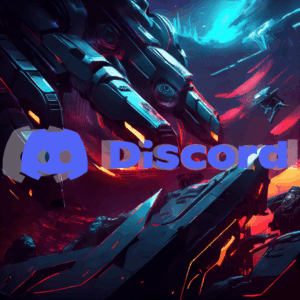The PlayStation Paradox: Why Sony is Breaking Exclusivity to Save Its Empire
Introduction: A Calculated Breach of the Fortress Walls
For a generation, the PlayStation brand was synonymous with an impenetrable fortress of exclusive, generation-defining games. The PlayStation 4’s market dominance was built on this very foundation: a relentless barrage of high-quality, narrative-driven titles like The Last of Us, God of War, and Horizon Zero Dawn that could only be experienced on Sony’s hardware. This strategy cultivated a fiercely loyal fanbase and established the console as the premier destination for premium single-player gaming. Yet, today, the walls of that fortress are being methodically, deliberately, and strategically dismantled. The sight of Kratos, Aloy, and Jin Sakai appearing on PC storefronts like Steam and the Epic Games Store is no longer a rare anomaly but a core component of Sony’s new playbook.
This strategic pivot presents what can be termed the “PlayStation Paradox”: the seemingly contradictory need to devalue its most famous historical asset—exclusivity—in order to secure its long-term future in a radically transformed industry. This shift is not a sign of weakness, nor is it a haphazard abandonment of the principles that built an empire. Instead, it is a calculated and necessary evolution, a multi-pronged response to a confluence of powerful forces that have reshaped the video game landscape.
This report will deconstruct PlayStation’s evolving strategy, moving beyond a simple catalog of PC ports to analyze the fundamental drivers compelling this change. We will explore the staggering economic pressures of modern AAA game development, where nine-figure budgets have made single-platform releases an unsustainable gamble. We will examine the seismic impact of the “Games as a Service” (GaaS) model, which has redefined the very concept of a “platform” from a piece of hardware to a networked community. Furthermore, we will contextualize Sony’s moves within the broader competitive landscape, particularly in response to Microsoft’s aggressive, service-oriented “Play Anywhere” paradigm. Finally, we will analyze the delicate balancing act Sony must perform: managing the expectations and brand loyalty of its core fanbase while pursuing the massive global audience that lies beyond its console ecosystem. This is the story of how PlayStation is breaking its own rules to win the next generation of gaming.
I. The $200 Million-Dollar Reality: De-Risking the AAA Gamble
The decision to port blockbuster titles to PC is not born from a sudden change of heart or a simple desire for extra cash. It is a direct and logical consequence of an economic reality that has become impossible for any major publisher, including Sony, to ignore: the unsustainable financial arms race of AAA game development. Creating the polished, cinematic, and technically demanding experiences that define the PlayStation brand has become a monumental financial risk, one that requires new strategies to mitigate.
The Unsustainable Arms Race of AAA Development
The era of AAA game development has transitioned from a creative pursuit into a high-stakes financial endeavor comparable to producing a Hollywood blockbuster. The budgets required to create flagship exclusive titles have grown exponentially, driven by player expectations for photorealistic graphics, vast and detailed open worlds, complex gameplay mechanics, and extensive post-launch support.
According to industry analysis, a modern AAA game with a launch window in 2024 or 2025 now carries a typical development budget that frequently surpasses $200 million. This represents a dramatic escalation from just five years prior, when the average range was between $50 million and $150 million. The most ambitious projects now command budgets that were once unthinkable. Reports from the Microsoft and Activision acquisition process revealed that the development budget for a new
Call of Duty title has already exceeded $300 million, while the highly anticipated Grand Theft Auto 6 is estimated to have a budget of over $250 million, with some speculating it could approach $1 billion over its lifetime.
These staggering figures are not solely for development. Marketing and promotion for a AAA title often constitute a “shadow budget” that can equal or even exceed the cost of production. A game like Red Dead Redemption 2, with a development cost around $206 million, was estimated to have a marketing budget of an additional $200 to $300 million. This combined investment means that a single title can represent a half-billion-dollar gamble for a publisher.
Further compounding this financial pressure is the extension of development cycles. While a AAA game in a previous generation might have taken two to five years to complete, today’s most complex titles often require five or more years of production. This longer timeline means paying the salaries of hundreds of specialized developers, artists, engineers, and testers for a much longer period, significantly inflating the total cost before a single dollar of revenue is earned. This confluence of rising technical demands, massive marketing spends, and elongated development timelines has pushed the traditional single-platform release model to its financial breaking point.
| Era | Average Development Budget | Standard Game Price | Key Game Example (Budget) |
| PS3 / Xbox 360 | $50M – $80M | $59.99 | Halo 4 (2012): ~$100M |
| PS4 / Xbox One | $80M – $150M | $59.99 | Final Fantasy VII (1997, as a precursor): ~$45M; Cyberpunk 2077 (2020): ~$313M |
| PS5 / Xbox Series X | $200M – $300M+ | $69.99 – $79.99 | Call of Duty (Modern): >$300M; Grand Theft Auto 6: >$250M |
Note: Budgets are estimates based on public reports and analyst data. The budget for Cyberpunk 2077 includes significant marketing costs.
This stark escalation in cost creates a powerful incentive for publishers to find new ways to maximize the return on their massive investments. The controversial industry-wide price hike from $60 to $70 for new games is one direct consequence of this pressure. However, simply increasing the price per unit is not enough to offset the risk. The other, more impactful lever is to expand the total addressable market for the expensive asset that has been created. This is where PC ports transition from a potential bonus into a financial necessity.
PC Ports as a Financial Lifeline
Faced with the monumental cost of AAA development, Sony’s strategy of porting its first-party titles to PC is a direct and highly effective method of de-risking its initial investment and maximizing the lifetime value of its intellectual property. This is not merely about chasing ancillary profits; it is an integral phase of a modern AAA product’s financial lifecycle.
Former Sony executive Shuhei Yoshida, who was instrumental in pushing for PC releases, articulated this rationale with striking clarity. He explained that porting an existing game to PC is “way cheaper than creating an original title,” making the subsequent revenue “almost like printing money”. This additional income, he stressed, is not just a bonus for shareholders but is crucial for funding the next wave of ambitious, high-budget games that the PlayStation brand is known for. The financial logic is inescapable: after a game has maximized its sales potential during its exclusive launch window on console, a relatively low-cost port can unlock a vast new revenue stream from the global PC gaming market.
While Sony’s official financial reports do not provide a separate line item for PC gaming revenue, analysis of its “other software sales” category—which encompasses sales outside the core PlayStation console ecosystem—reveals the significant scale of this business. For the fiscal year ending in March 2024, this category generated an estimated $730 million in revenue. Given that PlayStation’s presence on other platforms like Xbox and Nintendo is limited to niche titles like
MLB The Show, the vast majority of this figure can be attributed to PC releases. This revenue stream is not only substantial but also rapidly growing, with projections suggesting it is on track to exceed $1 billion in the current fiscal year. This makes PC gaming one of the most significant growth areas for the PlayStation division.
The return on investment (ROI) of this strategy is powerfully illustrated by individual case studies. The PC port of Horizon Zero Dawn, for instance, was so successful that its sales revenue was sufficient to cover the entire original development cost of the game. In effect, the PC release single-handedly financed the creation of a future AAA title of a similar scope. This demonstrates the power of the PC market to not only generate profit but to create a self-sustaining financial loop where older titles fund the creation of new ones, insulating the company from the risk of a single title underperforming on its launch platform. By leveraging the PC market, Sony transforms a single, high-risk investment into a multi-stage, high-margin revenue generator, ensuring the financial stability required to continue producing the very exclusives that define its brand.
II. The Service Imperative: How Live Games Redefined “Platform”
Beyond the raw economics of AAA development, a more profound paradigm shift has reshaped the gaming industry: the rise of the “Games as a Service” (GaaS) model. This business model, which prioritizes long-term player engagement and continuous revenue streams, operates on principles that are fundamentally at odds with traditional platform exclusivity. Sony’s strategic evolution is not just a reaction to cost but an adaptation to a world where the most valuable “platform” is no longer the console under the TV, but the global network of players engaging with a game.
The GaaS (Games as a Service) Revolution
The GaaS model represents a departure from the traditional “game as a product” approach, where a title is purchased once and the transaction ends. Instead, GaaS titles are designed to be ongoing services that monetize players over a long period, often indefinitely. This is achieved through a continuous stream of new content, events, and updates, funded by recurring revenue models such as in-game purchases (microtransactions), seasonal battle passes, or subscriptions.
This model has become a dominant force in the industry. For major publishers like Electronic Arts, live services are not an afterthought but the core of their business, accounting for a staggering 74% of their total revenue, with full game sales making up just 26%. The GaaS market itself reflects this dominance; it was valued at an estimated
$4.91 billion in 2024 and is projected to expand at a compound annual growth rate (CAGR) of 24.9% from 2025 to 2030. This makes it one of the most critical and fastest-growing sectors in gaming, one that a company of Sony’s scale cannot afford to ignore if it wishes to secure future growth.
The success of GaaS is built on maintaining a large, active, and highly engaged player base. The financial model relies on the principle that while not all players will spend money after the initial engagement, the consistent spending of a dedicated minority (often referred to as “whales”) is sufficient to fund ongoing development and generate substantial profit. This imperative—to build and sustain the largest possible community—directly informs platform strategy.
Why GaaS Demands a Multi-Platform Approach
The core logic of the GaaS model is fundamentally incompatible with the constraints of platform exclusivity. The value of a service-based game is directly tied to the size and health of its player network, a concept often explained by Metcalfe’s Law, which states that the value of a network is proportional to the square of the number of its users. A larger player base means more friends to play with, shorter matchmaking times, a more vibrant community, and ultimately, a more engaging and “sticky” experience that encourages long-term investment of both time and money.
Confining a GaaS title to a single console artificially limits its potential player pool, putting it at a significant disadvantage against competitors that embrace a multi-platform approach. Consequently, cross-platform play (or “cross-play”) has become the industry standard for any major multiplayer release. A vast and growing list of games, from behemoths like Fortnite, Apex Legends, and Call of Duty to smaller titles, now allow seamless play between PlayStation, Xbox, Nintendo Switch, and PC users. This has created a powerful player expectation: gamers now assume they will be able to play with their friends, regardless of the hardware they own. For Sony to compete in the GaaS space, it must meet this expectation.
Sony’s own success with Helldivers 2 provides the most compelling evidence for this strategic necessity. Launched simultaneously on PlayStation 5 and PC with full cross-play enabled from day one, the game became a runaway phenomenon. It sold an astonishing
12 million copies within its first 12 weeks, making it the fastest-selling PlayStation game in history. This unprecedented success was explicitly driven by its multi-platform strategy, which created a massive, unified player base that fueled its viral, word-of-mouth marketing and cooperative gameplay loop. Had
Helldivers 2 been a PS5 exclusive, its potential audience would have been immediately halved, likely stifling the explosive growth that made it a cultural moment.
The ultimate GaaS case study, Fortnite, further validates this approach from a different angle. Court documents from the Epic vs. Apple lawsuit revealed that between March 2018 and July 2020, the PlayStation 4 was Fortnite’s single largest source of revenue, generating an incredible 46.8% of its total income. This was more than Xbox One (27.5%) and far more than iOS (7%). This data proves two critical points: first, that the PlayStation player base is immensely valuable to a multi-platform GaaS titan, and second, that being available on all platforms does not diminish a game’s success on PlayStation—it enhances the entire ecosystem.
Sony’s Dual-Track Strategy
Recognizing the conflicting requirements of its different game types, Sony has not abandoned exclusivity wholesale. Instead, it has developed a sophisticated and nuanced “dual-track” strategy that applies different release rules based on a game’s underlying business model. This approach has been openly articulated by its leadership.
PlayStation Studios CEO Hermen Hulst and Sony Interactive Entertainment (SIE) CEO Hideaki Nishino have both described the company’s approach as “very measured” and “very deliberate”. They draw a clear line in the sand between two categories of games:
- Live-Service Titles: Games designed for ongoing multiplayer engagement, such as Helldivers 2 and the now-defunct Concord, receive day-and-date releases on both PC and console. This strategy is designed to maximize the player base from launch, a critical factor for the success of any GaaS title.
- “Tentpole” Single-Player Titles: These are the prestige, narrative-driven games that form the bedrock of the PlayStation brand, such as God of War: Ragnarok and Ghost of Tsushima. These titles are held back as timed exclusives on PlayStation for a significant period—typically at least a year, and often closer to two—before being ported to PC. Hulst states that these games serve as a “point of differentiation for the PlayStation console” and are intended to showcase the power of the PS5 hardware, offering the “best experience” at launch on Sony’s platform.
This dual-track logic extends to Sony’s subscription service, PlayStation Plus. In a direct contrast to Microsoft’s Game Pass, Sony does not release its major first-party tentpole games on PS Plus on day one. Instead, it maintains a release window of 12 to 18 months, or sometimes even longer, before adding them to the service.
God of War Ragnarök, for example, launched in late 2022 but did not arrive on PS Plus until January 2025, a gap of nearly 26 months. This strategy preserves the premium value of a new release and maximizes high-margin sales during the crucial launch period, again differentiating the business model for its single-player blockbusters from its service-based offerings.
This hybrid model allows Sony to compete on two fronts simultaneously. It can build large, cross-platform communities for its GaaS titles while still using the allure of timed exclusivity for its premium single-player games to drive console sales and maintain its brand identity. The recent failure of Concord, a $40 hero shooter, does not invalidate this GaaS strategy but rather refines it. A key reason cited for its failure was its premium price tag in a market dominated by free-to-play (F2P) competitors like Apex Legends and Valorant. For future GaaS titles to succeed, they will likely need to adopt an F2P model. This model, which relies on converting a small fraction of a massive player base, makes a multi-platform, cross-play launch not just an advantage, but an absolute prerequisite for survival.
| Game Title | Genre / Business Model | Console Release | PC Release | Time Gap | Strategic Rationale |
| Horizon Zero Dawn | Single-Player / Premium | Feb 2017 | Aug 2020 | ~3.5 Years | Expand franchise audience; generate revenue for sequel |
| God of War (2018) | Single-Player / Premium | Apr 2018 | Jan 2022 | ~3.75 Years | Reach new players; showcase a beloved IP |
| Days Gone | Single-Player / Premium | Apr 2019 | May 2021 | ~2 Years | Monetize a back-catalog title; find a new audience |
| Ghost of Tsushima | Single-Player / Premium | Jul 2020 | May 2024 | ~3.8 Years | Bring a highly acclaimed title to a new market |
| Ratchet & Clank: Rift Apart | Single-Player / Premium | Jun 2021 | Jul 2023 | ~2 Years | Port a technically impressive PS5 showcase title |
| God of War Ragnarök | Single-Player / Premium | Nov 2022 | Sep 2024 | ~1.8 Years | Timed exclusive to drive PS5 sales, followed by PC release |
| Helldivers 2 | Live Service / Premium | Feb 2024 | Feb 2024 | Day-and-Date | Maximize player base for GaaS success; enable cross-play |
| Concord | Live Service / Premium | Aug 2024 | Aug 2024 | Day-and-Date | Attempt to launch a new GaaS IP with a large initial player pool |
III. The Shadow of a Competitor: Responding to the “Play Anywhere” Paradigm
Sony’s strategic decisions are not being made in a vacuum. They are, in large part, a calculated response to the disruptive and aggressive multi-platform strategy being pursued by its primary competitor, Microsoft. The “console war” is no longer being fought on the traditional battlefield of unit sales alone; it has evolved into a war of ecosystems, services, and user engagement. Understanding Microsoft’s “Play Anywhere” paradigm is crucial to decoding Sony’s counter-moves.
Deconstructing the Xbox “Play Anywhere” Strategy
In recent years, Microsoft has fundamentally redefined the meaning of “Xbox.” The brand has evolved from being synonymous with a physical console to representing a broad, multi-platform gaming service with Xbox Game Pass at its core. The company’s strategic aspirations have shifted from making the Xbox console the best place to play, to making Windows the number one ecosystem for gaming, with the Xbox experience available across a constellation of devices.
The core tenets of this strategy are clear:
- Broad Game Availability: Microsoft is actively breaking down the “walled garden” of exclusivity by releasing its first-party games on competing platforms like PlayStation and Nintendo, as well as PC, to maximize sales and monetization potential.
- Service-Centric Model: Xbox Game Pass is the centerpiece of the entire strategy. By placing all of its first-party titles on the service on the day of their release, Microsoft is prioritizing recurring subscription revenue over traditional premium unit sales. This value-oriented proposition is designed to change consumer habits and lock players into the Xbox ecosystem.
- Hardware Agnosticism: While Microsoft continues to develop its own consoles, its strategy is increasingly hardware-agnostic. The company has partnered with third-party manufacturers like ASUS to create Xbox-branded hardware, such as the ROG Ally X handheld PC, signaling that the proprietary console is no longer the sole pillar of its business.
- Seamless Cross-Device Play: The “Play Anywhere” initiative, which grants players a license for a game on both Xbox and PC with a single purchase, is designed to make the transition between devices seamless, reinforcing the idea of Xbox as a ubiquitous service rather than a single device.
This strategy is a direct response to slowing growth in the traditional console market and the recognition that modern players engage with games across multiple devices. Microsoft is betting that the value and convenience of its service-based ecosystem will be more compelling to consumers in the long run than the traditional hardware-and-exclusives model.
Sony’s “Confident and Committed” Counter-Strategy
Faced with this disruptive push from its rival, Sony has been deliberate in its response. The company acknowledges the competitive pressure but has publicly and repeatedly affirmed its commitment to a different path, refusing to simply mirror Microsoft’s strategy.
In a recent investor fireside chat, SIE CEO Hideaki Nishino characterized Microsoft’s multi-platform pivot as “healthy” for the industry, stating that it creates competition and “pushes us to innovate”. However, he immediately followed this by asserting that Sony is “confident and committed on our current strategy” and feels “no urgent need for us to pivot”. This is not a company in panic, but one executing a carefully considered counter-strategy.
That counter-strategy is the hybrid, dual-track model detailed previously. It is an asymmetric response to Microsoft’s challenge. Instead of engaging in a head-to-head battle on the “day-one subscription” front—a fight that would be financially devastating to its premium sales model—Sony is effectively ceding that ground. It will not put its $200 million single-player blockbusters on PS Plus at launch. Instead, it is reinforcing its traditional stronghold: offering the definitive, premium launch experience for the biggest narrative-driven games. Simultaneously, it is opening a new front by competing aggressively in the GaaS space with a multi-platform approach, an area where Microsoft has had its own share of struggles.
Furthermore, Sony’s forward-looking statements about the PlayStation 6 reinforce this differentiation. Company executives have emphasized a continued focus on delivering unparalleled performance through high-powered, locally-processed hardware. This stands in contrast to Microsoft’s increasingly service- and cloud-oriented approach, signaling that Sony still believes in the core value proposition of a dedicated, powerful gaming console as the centerpiece of its ecosystem.
This strategic divergence reflects a fundamental shift in the nature of the console war. It is no longer solely about which company sells more hardware units. The primary metric of success is now ecosystem revenue per user, or lifetime value (LTV). Both companies are pursuing this goal, but with different models for capturing that value. Microsoft aims to acquire a massive base of subscribers and monetize them through a recurring fee. Sony, on the other hand, aims to maximize the value of each IP asset through a multi-stage lifecycle: a high-margin premium console launch, followed by long-tail revenue from a PC port, supplemented by ongoing income from its own subscription services and GaaS titles. Sony’s PC strategy is a crucial component of this LTV-focused approach, transforming a PC gamer who buys God of War into a potential future customer for a sequel on a PlayStation console. The goal is no longer just to sell a box, but to cultivate a fan of an IP who will spend money within the PlayStation ecosystem, regardless of their primary screen.
IV. The Brand Paradox: Balancing a Loyal Base with a Global Ambition
Perhaps the most delicate aspect of Sony’s strategic pivot is the management of its brand identity and the expectations of its most loyal customers. For years, the promise of exclusivity was the central pillar of the PlayStation brand contract. The decision to systematically release those exclusives on other platforms, even with a delay, has inevitably created friction with a vocal segment of its core fanbase, forcing Sony to perform a difficult balancing act between appeasing its faithful and pursuing a necessary global expansion.
The Voice of the Faithful: Community Backlash and the “Devaluation” Argument
The move to port flagship titles to PC has not been without consequence. A vocal and passionate segment of the core PlayStation community has expressed feelings of betrayal and frustration, arguing that the strategy fundamentally devalues their investment in the PlayStation ecosystem.
Online discussions and community polls paint a clear picture of this sentiment. In one poll on the fan forum Icon-Era, 44.4% of respondents stated that the PC port initiative had broken their trust in Sony. The core grievance, echoed across numerous forums, is that exclusivity was a primary reason for purchasing a PlayStation console. Seeing titles like
Horizon Forbidden West or Ghost of Tsushima arrive on PC makes them feel that the unique value proposition of their hardware has been diminished. One user described the strategy as “looting the PS exclusive library for pennies,” while another lamented that Sony is “devaluing their own platform”.
This sentiment is not just idle chatter; for some, it has led to tangible changes in purchasing behavior. Fans have stated that they are now more inclined to wait for deep discounts or even purchase used copies of games they know will eventually come to PC, a move that directly cuts into Sony’s high-margin launch window revenue. The anger is often directed at Sony for, in their view, taking away the very thing that made their platform special, with some console players expressing hostility towards the PC community they see as benefiting from this shift. This backlash represents a genuine brand challenge that Sony must navigate carefully.
Sony’s Justification: Reaching New Audiences and Growing the Brand
From Sony’s perspective, the PC strategy is not one of dilution but of expansion. The company’s leadership has consistently framed the move as a way to grow its franchises and introduce its world-class IP to a massive new global audience.
Both Hermen Hulst and Shuhei Yoshida have explicitly stated that a key objective is to “reach new audiences” who do not own PlayStation consoles. Yoshida specifically highlighted the strategic importance of PC-dominant markets like China, where the console market is small but the PC gaming market is enormous. In order to make franchises like
God of War or Horizon truly global phenomena, a PC release is not just beneficial but “crucial”.
This strategy operates on what can be called the “taste and buy” theory. The idea, as articulated by both executives and community members who support the strategy, is to give PC players a “taste” of a franchise with an older title. The hope is that this experience will convert them into fans who are then motivated to purchase a PlayStation console to play the sequel at launch, rather than waiting several years for its eventual PC port.
The timed-exclusivity window is Sony’s primary tool for managing this brand paradox and mitigating the backlash from its core audience. The typical 1.5 to 2-year gap for major single-player games is a strategic compromise. It is designed to preserve the status of the PlayStation 5 as the premier, definitive platform to experience its biggest games first. This delay allows Sony to send a clear message to its loyal console base: “You are still our priority. You get to be part of the cultural conversation at launch, and you experience these games years before anyone else.” This value proposition of immediacy and being at the forefront of gaming culture is intended to offset the feeling of devaluation that comes with the eventual multi-platform release.
Ultimately, Sony, as a highly data-driven company that leverages extensive analytics to guide its business decisions, has likely made a calculated decision. The financial data clearly indicates that the revenue gained from the PC market, potentially over $1 billion annually, is a massive and undeniable benefit. While the negative sentiment from a portion of the hardcore community is real, Sony has likely calculated that the number of players who will fundamentally alter their long-term purchasing habits is relatively small compared to the vast new audience and revenue stream unlocked by PC releases. The brand friction is, therefore, a predictable and acceptable cost of doing business, a calculated risk taken to achieve far greater strategic and financial goals. The timed-exclusivity window is the key instrument of damage control, a compromise designed to appease the core while aggressively expanding the market.
Conclusion: Forging a New Kando for the Next Generation
Sony’s strategic shift away from iron-clad exclusivity is not a single decision but a complex, multi-faceted response to the powerful currents reshaping the modern gaming industry. It is a calculated evolution driven by the confluence of three primary forces: the immense economic pressure of AAA development, the disruptive rise of the Games as a Service model, and an intensely competitive landscape being redefined by Microsoft. This is not the abandonment of a winning formula but the forging of a new, more resilient one for the future.
The PlayStation Paradox—weakening the historical pillar of exclusivity to strengthen the overall empire—is resolved when viewed through this lens. The strategy is not a monolithic pivot but a sophisticated, dual-track approach. For its prestige, narrative-driven blockbusters, Sony preserves the premium launch window on its consoles, reinforcing the hardware’s value and rewarding its loyal base. This is followed by a lucrative, long-tail PC release that de-risks the massive initial investment and expands the IP’s reach. For its live service ambitions, it embraces a day-and-date, multi-platform model to build the large, networked communities essential for success. This hybrid model is Sony’s asymmetric answer to its competition, allowing it to defend its stronghold in premium gaming while simultaneously attacking the growing service-based market.
This evolution is fundamentally redefining the PlayStation value proposition. The brand is transitioning from a closed hardware ecosystem to a broader entertainment platform, anchored by its world-class intellectual property. The console—the PlayStation 5 today and the PlayStation 6 tomorrow—is being repositioned as the premium, flagship gateway to that ecosystem, but not its sole point of entry. It is the best place to experience PlayStation’s worlds first, with the highest fidelity and performance that powerful, dedicated hardware can provide. The ultimate vision aligns with Sony’s corporate philosophy of delivering
Kando—emotional connection and excitement—through its creative content, regardless of the screen on which it is consumed.
Looking ahead, the current strategy is laying the groundwork for a future where hardware power and software ubiquity are not mutually exclusive. The challenge for Sony will be to continue proving the immense value of its premium console experience in a world where its own games are, by its own design, increasingly available everywhere. Sony is not killing its golden goose of exclusivity. It is building a larger, more resilient, and vastly more profitable farm around it, ensuring that the PlayStation brand, in all its forms, thrives for the next generation and beyond.










Add comment